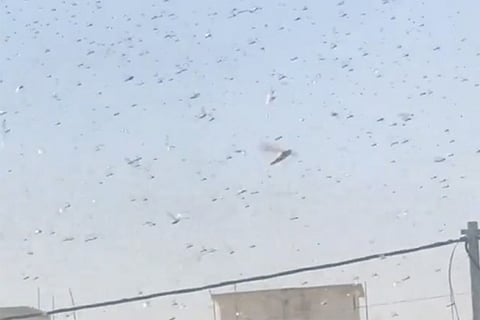

Ahmedabad
The few remaining locusts have migrated to Jalore district of Rajasthan, an official said.
A huge swarm of locusts invaded Banaskantha district bordering Rajasthan two weeks ago, feeding on crops such as mustard, castor and wheat. The menace was greater in Suigam, Danta, Tharad and Vav tehsils.
"Presence of locusts in the state is negligible now.
In the last three days, we ran a massive operation, destroying locusts in large numbers," said Punamchand Parmar, Additional Chief Secretary, state Agriculture department.
Remaining locusts fled to Sanchore in Rajasthan's Jalore district on Friday night, he said.
Eight teams of central government officials have been deployed in Jalore to tackle the invasion and local farmers need not worry about damage from the insects, he said.
A central team has also stayed put in Gujarat, Parmar added.
"So far we have surveyed 10,000 hectares of area, of which we found locusts on 7,000 hectares. The insects were destroyed over 5,000 hectares by spraying pesticides," he said.
Around 4,900 litres of pesticides were sprayed, he informed.
"Locusts from Tharparkar in Pakistan invaded Rajasthan, which falls in their migration route. Central government teams took action to destroy them, but a few remained in Jalore district," he said.
It was these locusts which invaded Banaskantha through Thrad tehsil, the official added.
Locusts from Tharparkar were migrating towards Balochistan for breeding season, but now a large number of them have been killed, Parmar said.
The farmers whose crops were destroyed by locusts will be compensated as per the State Disaster Response Fund provisions, under which Rs 6,800 are paid per hectare if 33 per cent of crop or more is damaged, Parmar said.
Visit news.dtnext.in to explore our interactive epaper!
Download the DT Next app for more exciting features!
Click here for iOS
Click here for Android